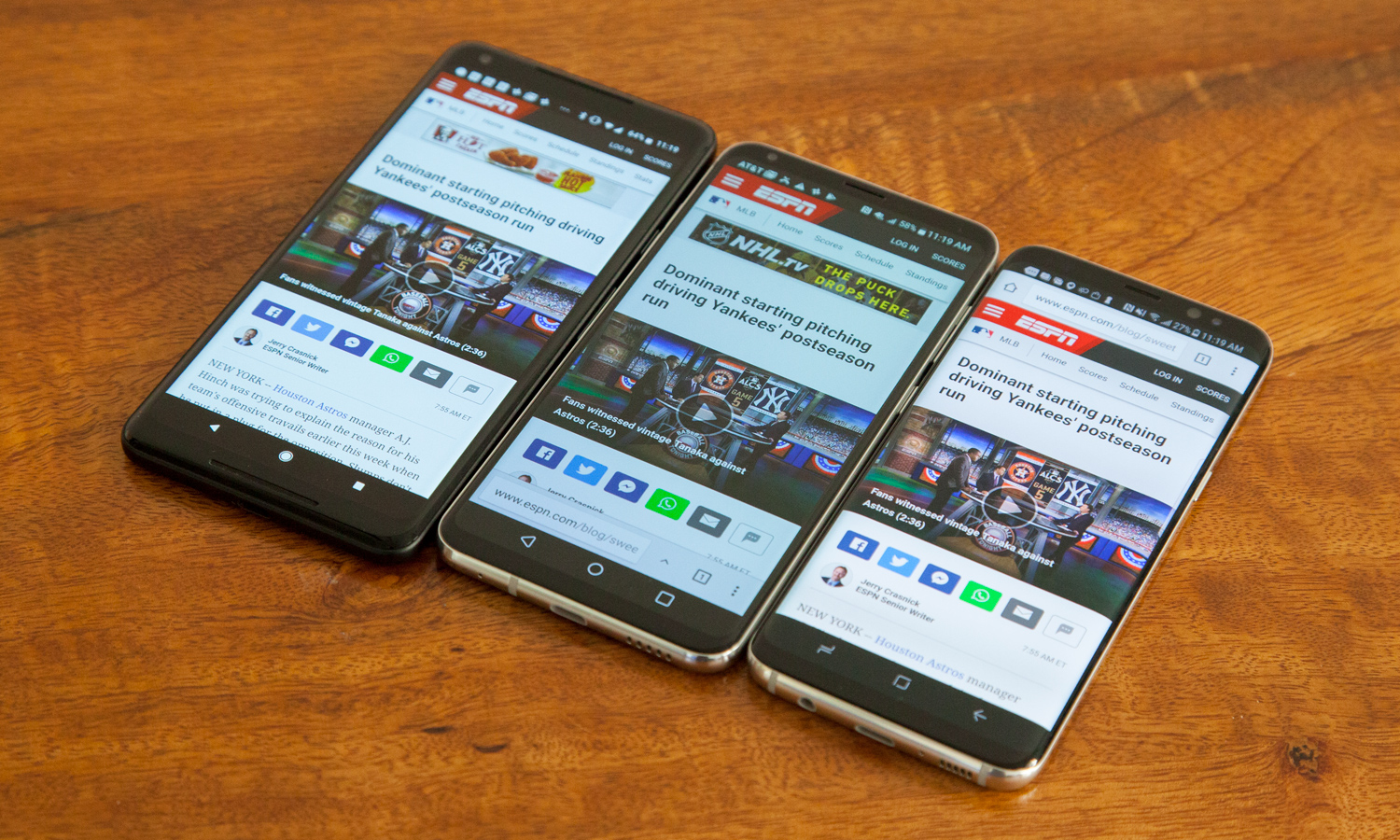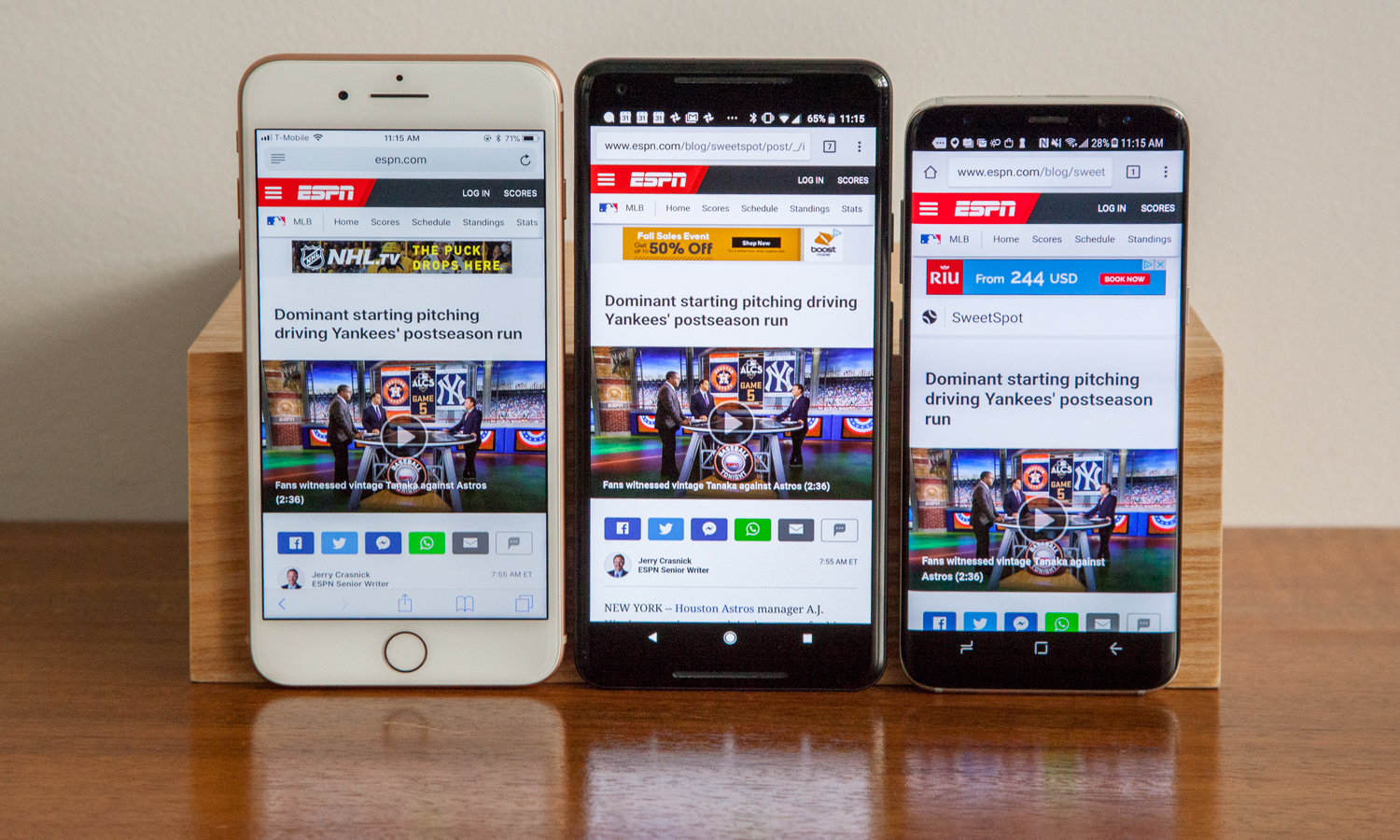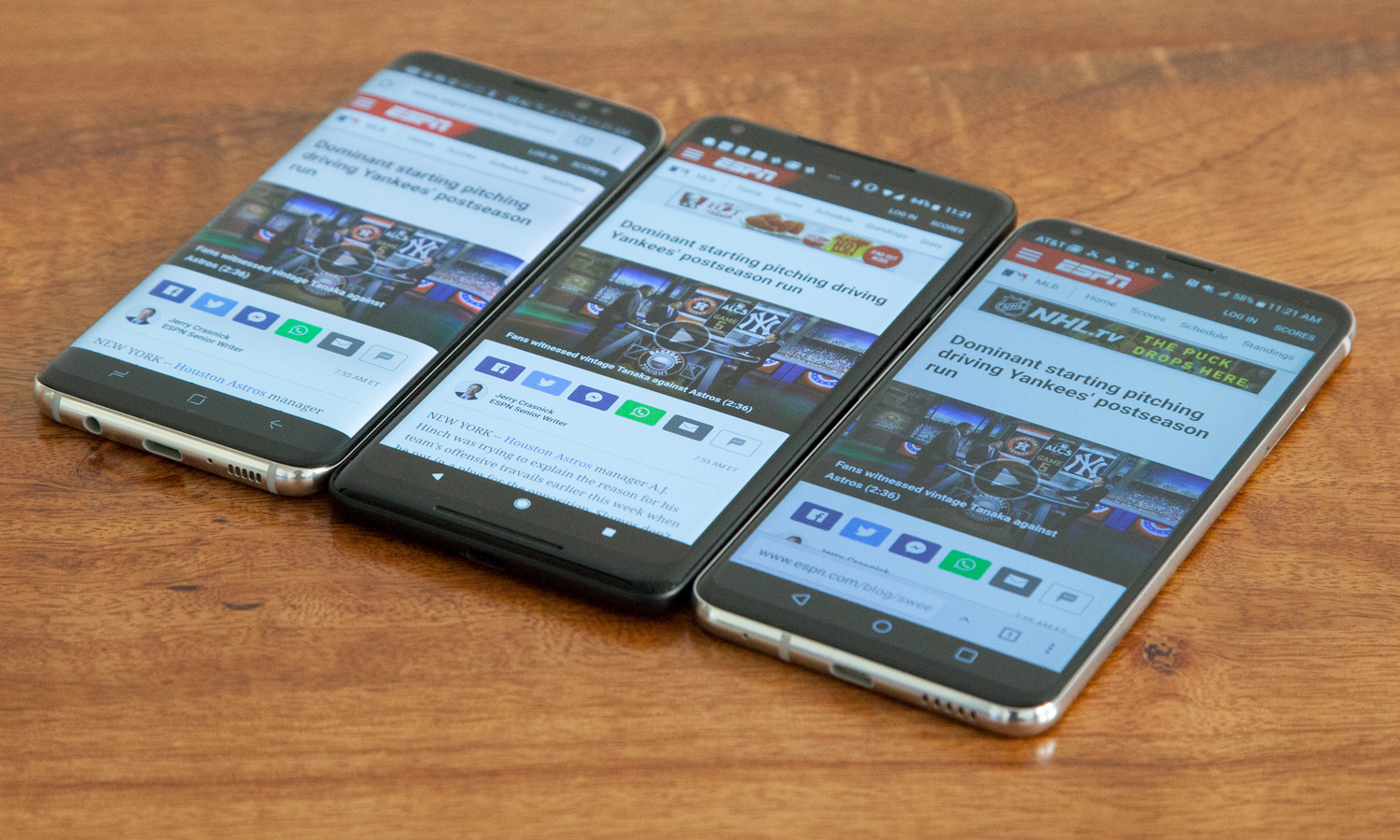Is The Pixel 2 XL's Screen Really That Bad? Here's Our Take
Critics are complaining of muted colors, poor viewing angles, and grainy webpages on Google's new Pixel 2 XL. We put it side-by-side with competing phones to find out what's going on.

Reviews of Google’s highly-anticipated Pixel 2 and 2 XL have rolled in, and although overall impressions are generally positive, there appears to be something amiss with the larger model’s screen.

While the smaller-sized Pixel 2’s 5-inch AMOLED panel appears to be perfectly serviceable as far as flagship smartphone displays go, it’s surprisingly the more expensive model’s 6-inch POLED screen that is presenting problems. Critics have complained of washed out colors, poor white balance, an unavoidable color shift at certain angles, and a slight graniness to solid hues.
I took my first look at the Pixel 2 XL’s display this morning, and immediately noticed it wasn’t quite right. To know for sure, I slotted it between a few of its competitors, and the results were telling.
The Pixel 2 XL’s screen goes almost teal peering at it from above or below, something you simply don’t encounter on the iPhone 8 Plus or Galaxy S8.
The iPhone 8 Plus has the finest LCD screen you’ll find in a smartphone, and the same can be said of the Galaxy S8’s curved AMOLED panel. Looking at the Pixel 2 XL sandwiched between them, Google’s flagship clearly demonstrates an overall warmer tint, almost like the phone’s Night Light mode has been switched on. But the problems unfortunately run even deeper than that.
Viewing ESPN.com on all three devices, the colors simply don’t pop with the same intensity on the Pixel 2 XL. That’s not terribly surprising compared to Samsung’s handset — the Galaxy S8’s screen is as perfect as they come. But I was shocked to find the iPhone 8 Plus also deliver a more vibrant picture. One of the primary advantages of OLED versus LCD is wider color gamut, and yet the Pixel 2 XL is so blatantly off the mark, it could nearly pass for a vintage Instagram filter.
MORE: Pixel 2 XL Screen Defective? Google Responds
Off-center perspectives produce even more damning results. The Pixel 2 XL’s screen goes almost teal peering at it from above or below, something you simply don’t encounter on the iPhone 8 Plus or Galaxy S8. And the film grain complaints are also true; the Pixel 2 XL shows solid colors with a roughness that almost looks like the artifacting you get on overly compressed JPEGs.
Get instant access to breaking news, the hottest reviews, great deals and helpful tips.
It should be noted that Google offers a Vivid color mode on both Pixel 2 devices that is activated by default. While it helps bring a little punch back to the larger phone’s screen, it can’t remedy the graininess or viewing angle dilemmas. All phones in this comparison have been placed in their respective normal color modes.

Looking at both of Google’s flagships side-by-side, we see the smaller model seems to have been spared of these problems. The 5-inch Pixel 2 doesn’t achieve the same brightness as the 2 XL, but it does win out in terms of white balance and color representation, and doesn’t produce the same kind of spottiness with solid colors.
MORE: Pixel 2 vs Pixel 2 XL: Here's How They're Different
Both comparisons demonstrate the Pixel 2 XL’s weaknesses, but we wanted to conduct one more. The LG V30, which also debuted last week, utilizes a POLED panel that is the same size and resolution as the Pixel 2 XL’s. Because of this, some critics, like The Verge’s Vlad Savov, have theorized that the V30 and Pixel 2 XL share the same displays and thus, the same shortcomings.

As the image above demonstrates, the V30 definitely presents an even worse blue tint at off angles. But in other respects, I don’t see many similarities between the two. The LG’s colors are still better, the whites are more in line with those of the Galaxy S8 at the left, and, although you can’t see it in this image, the V30 misses the artificating that is especially noticeable when looking at bright colors.
So what’s the verdict? The Pixel 2 XL does have a display problem, and its not that Google’s approach is “more natural” than the competition, as the company has described. The less vivid color palette is but one of several issues — it’s completely irrelevant in terms of viewing angles and artifacting. Unfortunately, it's a real con for an otherwise brilliant smartphone.
Adam Ismail is a staff writer at Jalopnik and previously worked on Tom's Guide covering smartphones, car tech and gaming. His love for all things mobile began with the original Motorola Droid; since then he’s owned a variety of Android and iOS-powered handsets, refusing to stay loyal to one platform. His work has also appeared on Digital Trends and GTPlanet. When he’s not fiddling with the latest devices, he’s at an indie pop show, recording a podcast or playing Sega Dreamcast.
-
robert.thorneycroft Finally I thought I had a stock Android replacement for my Nexus 6, now it looks like I've got another year to wait!Reply -
william.p.adams I don't quite understand the article. It seems mostly to be falling in line, rather than actually being truthful. I took the image of the S8, 2XL, and V30 and uploaded them to a color picker to get the hex codes. The white area of the S8 shows RGB code: R: 188 G: 223 B: 245, whereas the 2XL shows RGB code: R: 191 G: 226 B: 248, which is really close, vs the V30 which shows RGB code: R: 149 G: 196 B: 231, much further off. Picking the Iphone 8, 2xl, S8 image, and clicking on the red ESPN logo shows me, for the iphone: RGB code: R: 228 G: 1 B: 9, for the 2XL: RGB code: R: 248 G: 20 B: 25, and the S8: RGB code: R: 243 G: 9 B: 42.Reply
I know that there's some amount of eye of the beholder effect going on here, but are you (and many people) having a bit of a Group Think thing going on? -
dpenney The iPhone whites look pretty grey in that top pic - perhaps it's something you need to see firsthand as opposed to looking at pics on yet another screen.Reply -
dpenney The iPhone whites look pretty grey in that top pic - perhaps this is something that needs to be seen firsthand and not via pics viewed on yet another screen...Reply -
william.p.adams The data doesn't like, though. Even if every screen there is tinted by the camera, or my screen, they are in the same shot from the same camera, so comparisons of coloration in the same image means they're all tint d, and the 2xl is comparable to the S8Reply -
sced06 I don't agree at all. I spent an hour today comparing the 2xl with the Note 8 and my current samsung s6 edge +Reply
The pixel 2xl was better looking than my s6, whites were whiter, text was sharper, colors were just as good. Compared to the Note 8, yes the colors are more saturated but to me, the note8 only looks better on the home screen with the icons and I'm not even sure that it was that much better. When viewing google maps for example or reading a story on the net, I thought the Pixel 2xl looked definitely better. -
aambrozai Just buy a OnePlus 5 and spare a few hundred $$$'s. I bought one and it's my best smartphone so far by far...Reply
